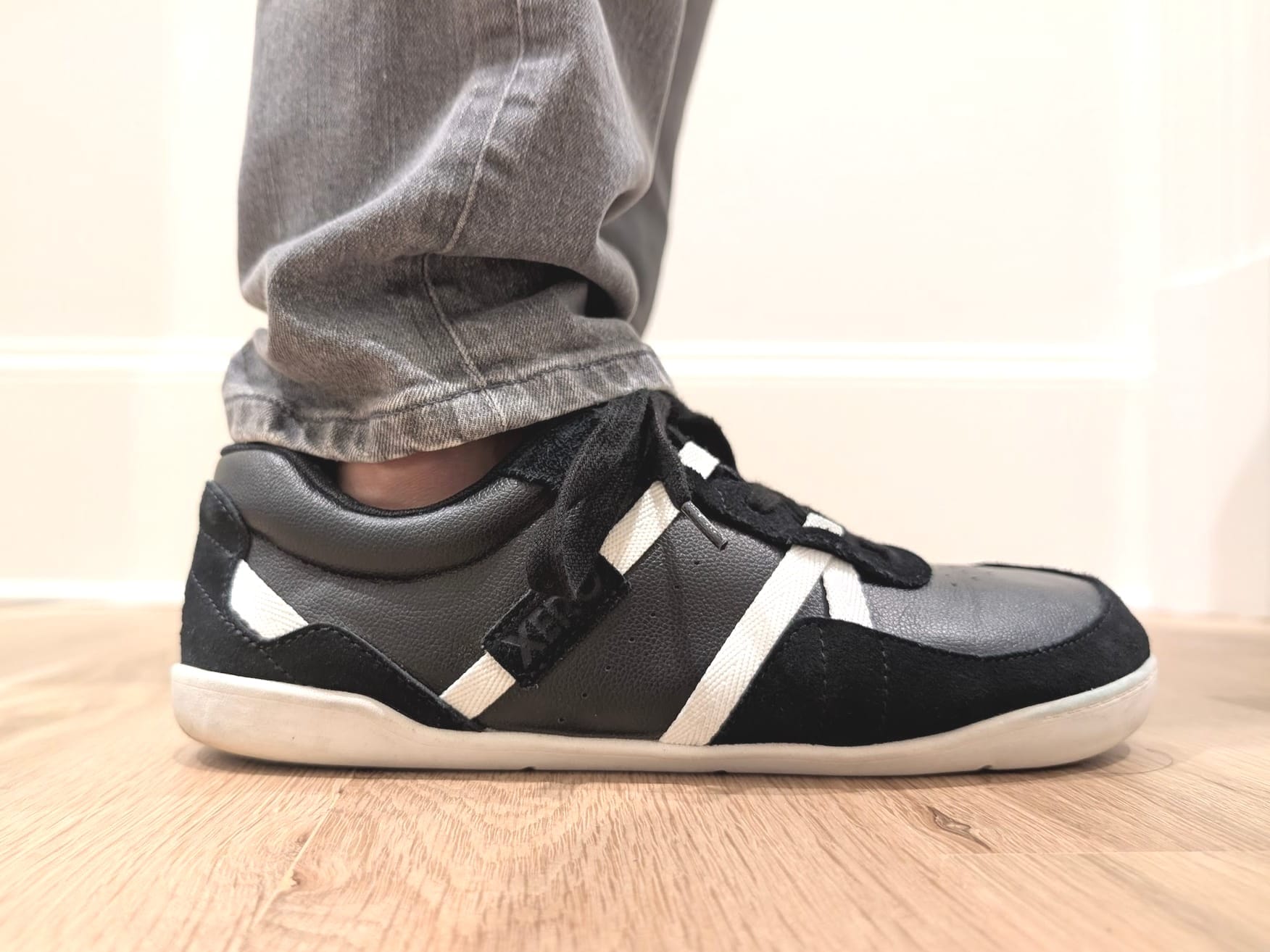Vibram FiveFingers Trek Ascent LR Review
The Vibram FiveFingers Trek Ascent LR is the latest premium all-terrain shoe from Vibram Five Fingers. It features a MEGAGRIP sole compound, a very aggressive tread design, and good protection from just about anything you can run into, onto, and over on the…

The Vibram FiveFingers Trek Ascent LR is the latest premium all-terrain shoe from Vibram Five Fingers. It features a MEGAGRIP sole compound, a very aggressive tread design, and good protection from just about anything you can run into, onto, and over on the trails.
Over the past few weeks I've been giving these toe shoes a solid test and what follows is my full review—after the jump!
About the FiveFingers Trek Ascent LR
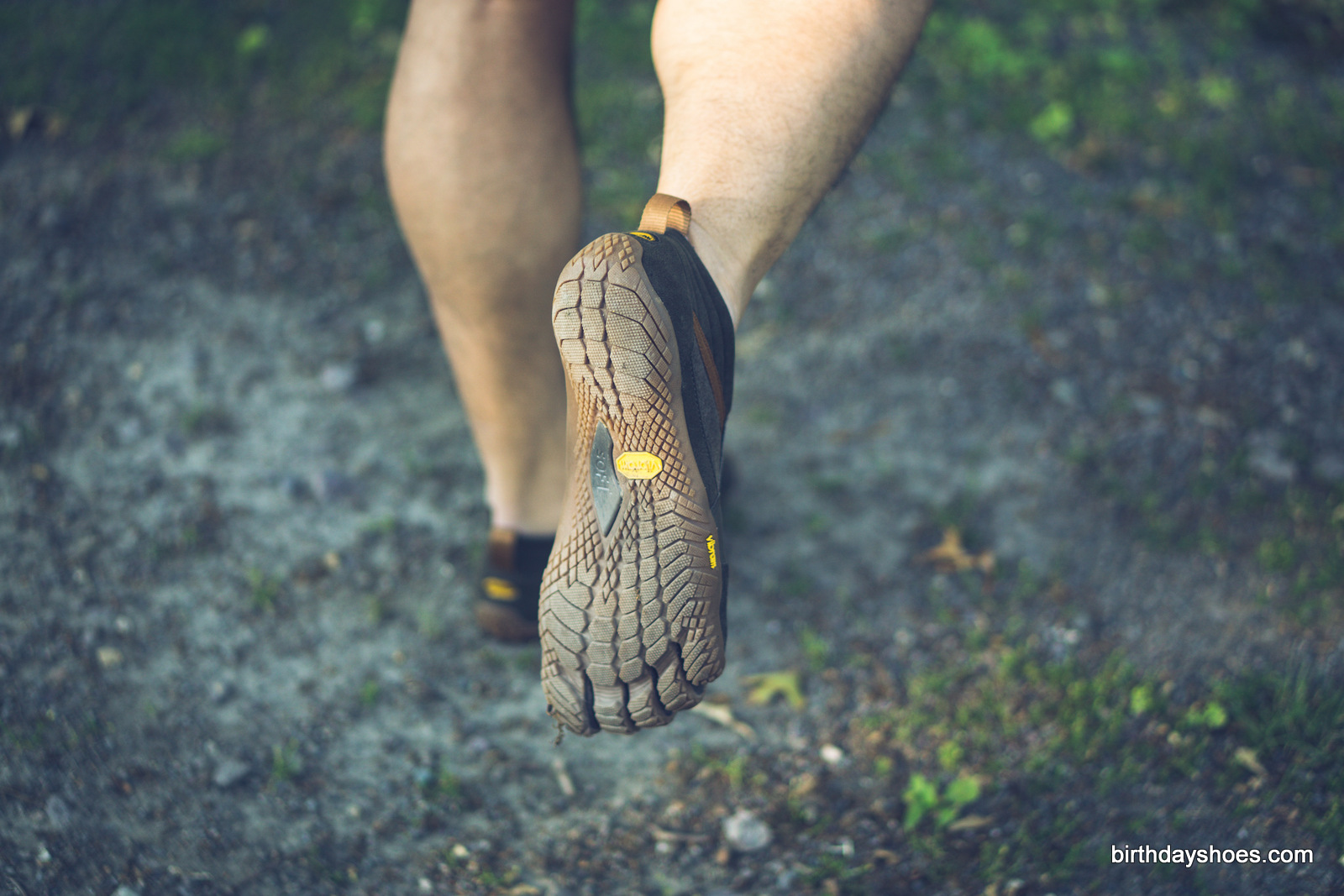
Here's what Vibram says about the Trek Ascent LR:
A new outdoor introduction to the FiveFingers family, the Trek Ascent LR is a rugged minimalist shoe designed for hiking tough terrain. A super grippy outsole and leather/hemp upper construction makes this the 4-wheel-drive version of our orginal barefoot model.
Weight — 6.5 oz (men's euro 41) (the old KSO TREK that the Trek Ascent replaces weighs 5.82 oz)
Total Stack Height — Trek Ascent LR: 8mm (4mm outsole + 4mm EVA midsole)
Compare the Trek Ascent LR to other, similar FiveFingers:
Spyridon — 6.5mm (3.5mm outsole + 3.0 footbed)
KSO TREK — 8mm (4mm outsole + 4mm EVA midsole)
Barefoot scale — Ideal Uses: Hiking, trail running,
Pros
- MEGAGRIP compound is super grippy!
- Toe grooves improve flexibility
- Good groundfeel for the stack height
- Durable
- Fast-drying leather and hemp upper
- Adequate protection from rocks, roots, and branches
- Excellent lace-system with button lock as opposed to a velcro lock
Cons
- Higher ankle collar may bother some users (see section on Sizing below for more)
- Toes feel “lifted” due to the flex grooves and thick stack height
Take a spin around the Trek Ascent LR via these photos:
Sole
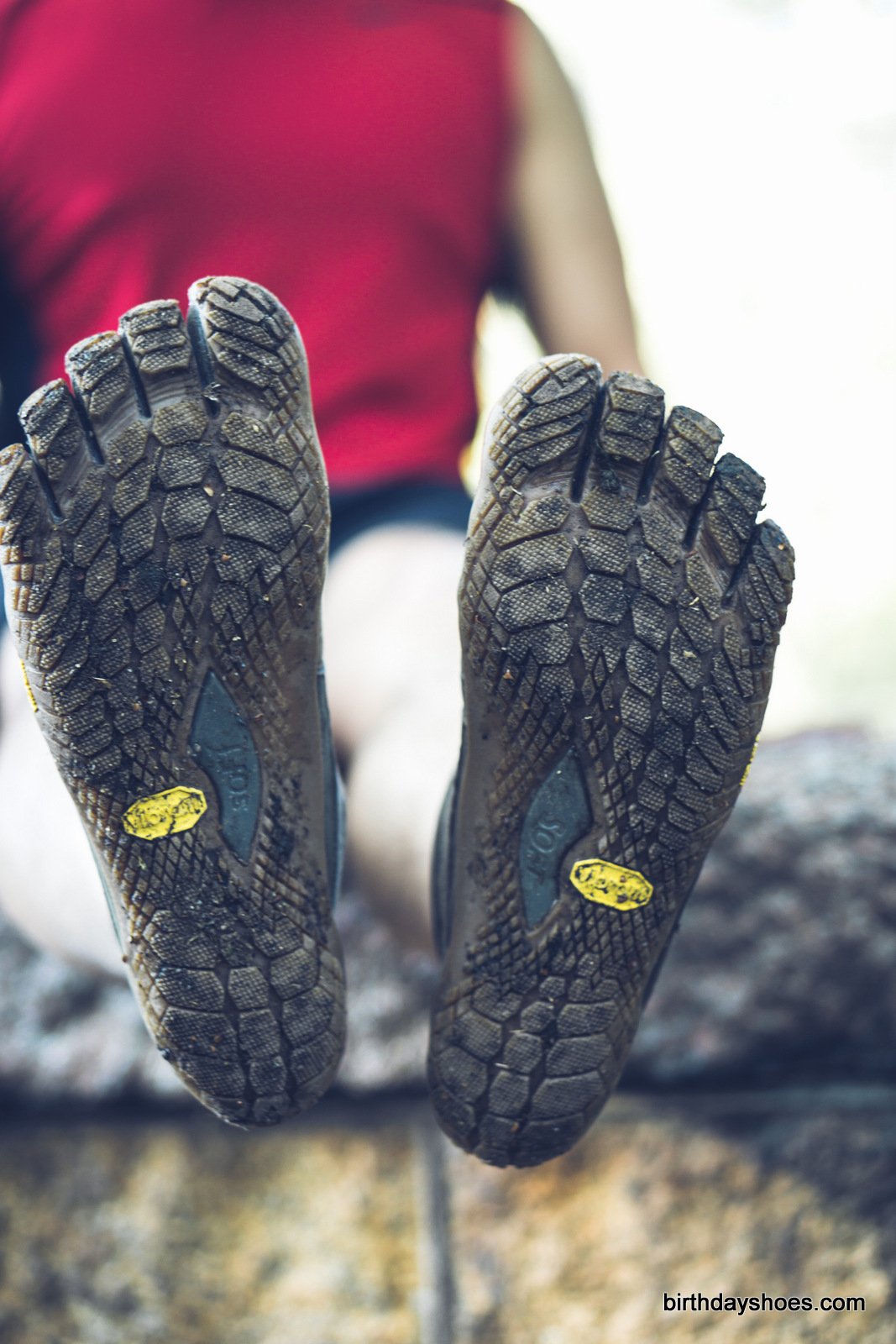
The Trek Ascent LR (and non-LR version) feature Vibram’s new MEGAGRIP compound that is claimed for better traction on wet and slippery surfaces. The Trek Ascent is a replacement for the leather KSO TREK (and KSO TREK LS) and, in my opinion, the Spyridon MR. As you'll recall, the KSO Trek was originally introduced five years ago in 2010, so the "Trek" line was long overdue for an update. The Spyridon sole was introduced about three years back, too, so it was also due for a refresh.
As for the Trek Ascent sole, the traction lugs on the MEGAGRIP sole are very aggressive with tons of cleats that are larger in size towards the heel and toe and smaller towards the middle. Each individual lug has a spiked texture and the lugs on the forefoot and toes are angled for uphill surfaces, while the heel section is slightly angled for downhill terrain. Overall, these lugs are more plentiful and more aggressively textured than even the Spyridon MR.
There is a “soft” button/logo near the arch. It’s mostly cosmetic, much like the “rock block” window in all versions of the Spyridon. I have read that this “soft” button gives you an idea of how soft the EVA footbed (non-removable) is inside the shoe and I guess that is a good enough explanation for me. As this button is, more or less, cosmetic, I think Vibram should have kept the entire sole intact and left out this button as it is a smooth section that takes up surface area where we could have more rubber for grip.

The sole features “flex grooves” in all of the toes in a manner that is very similar the Bikila EVO for enhanced flexibility with the somewhat thick sole. These cuts are about 2-3mm deep and allow for easy upward toe flex, but a downward toe flex is not really possible. The KSO TREK is slightly more flexible than the Trek Ascent LR but the Trek Ascent LR is more flexible than the Spyridon thanks to these toe grooves.
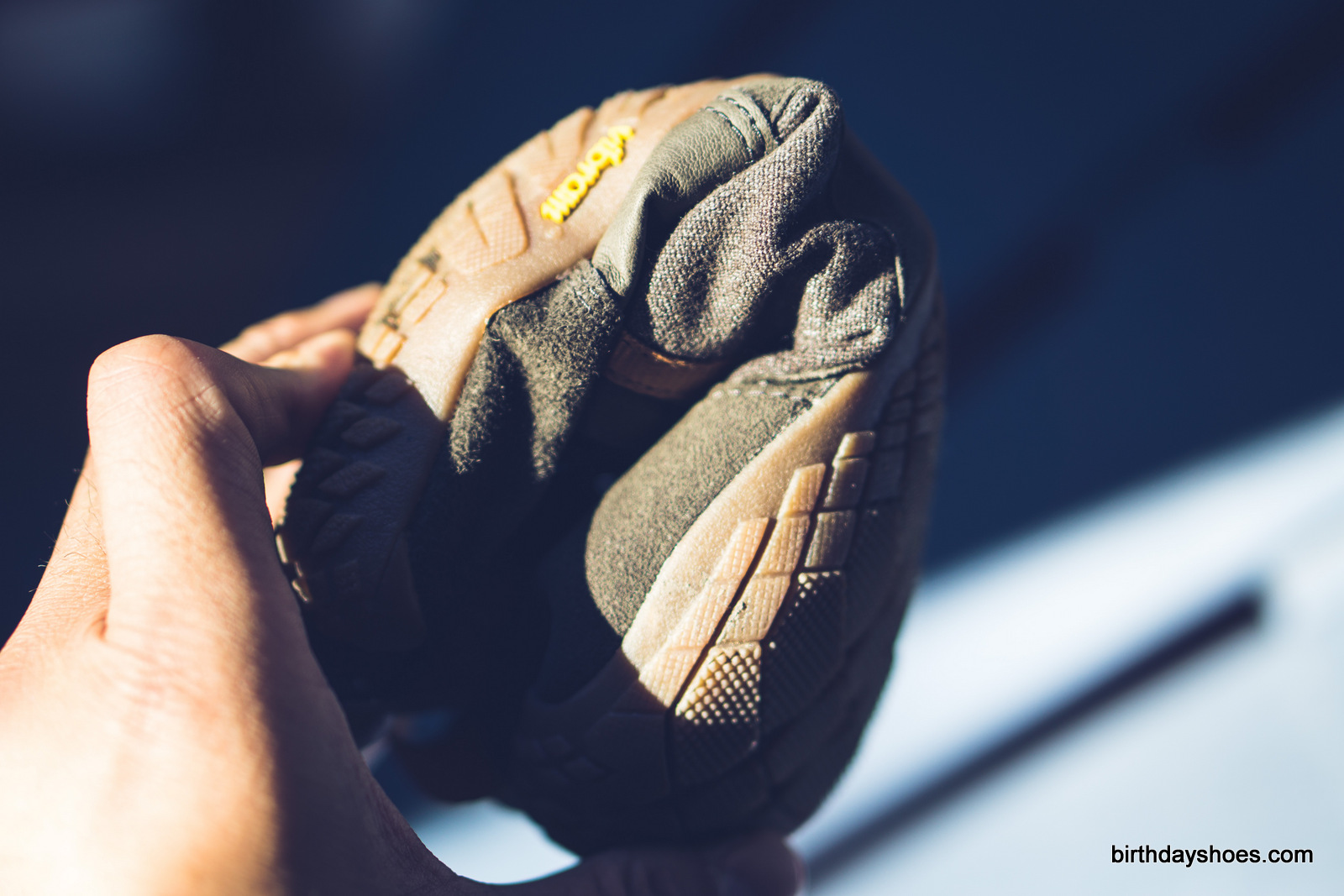
Because the sole is pretty thick and the toe grooves are quite deeply cut, the tips of your toes have a bit of a disconnected, “lifted-off” feeling. Upon landing, your toes make contact with the ground slightly earlier than you would expect them to, but this feeling goes away after a short adjustment period. This "lift" is at least somewhat reminiscent of the same sensation of the original KSO Trek.
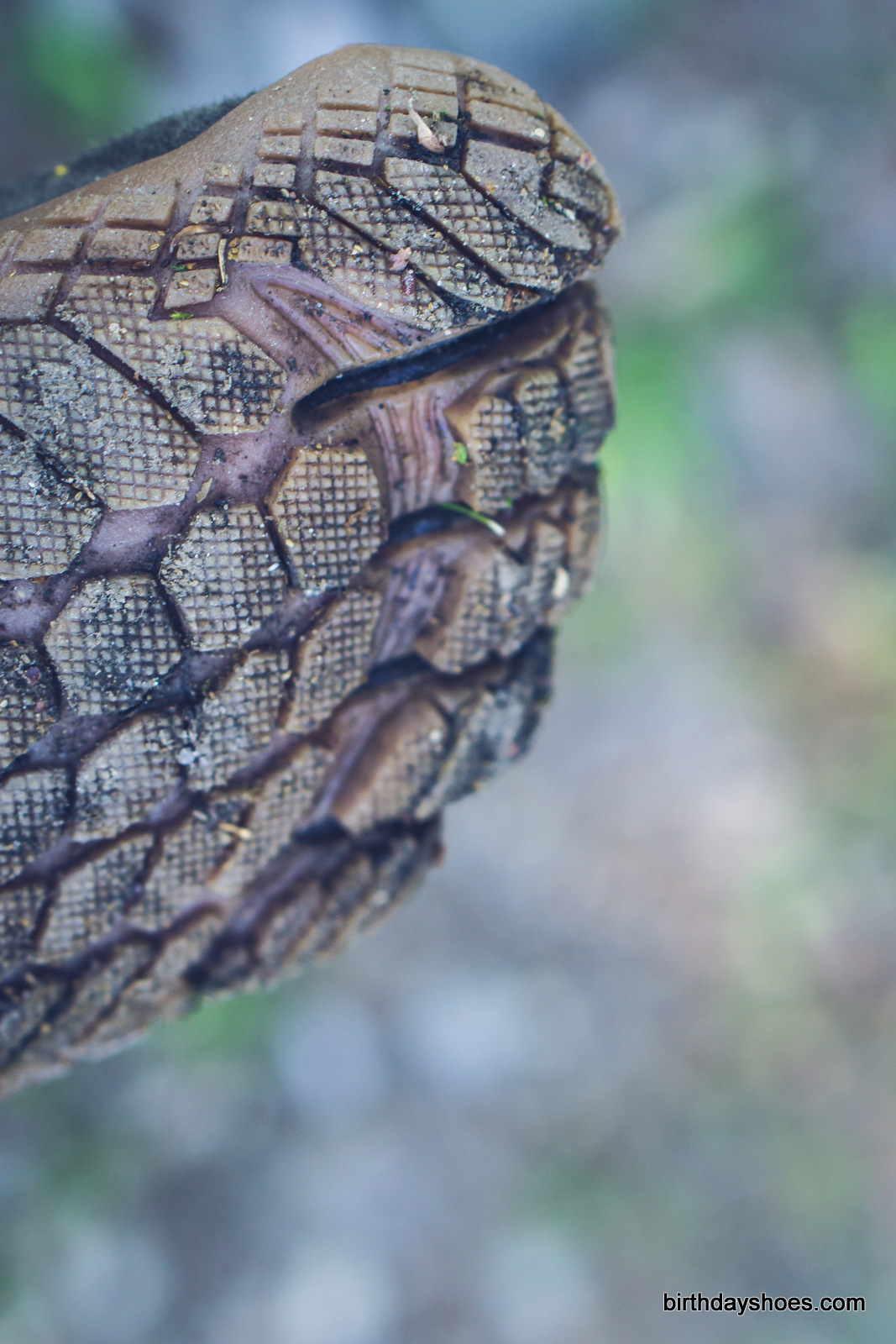
The aggressive sole, MEGAGRIP compound, and flex grooves make the Trek Ascent LR (and non LR version) an excellent trail hiking and trail running shoe. I do a lot of trail running in my free time and I found that the combination of slip-resistant rubber and deep lugs allow my foot to grip dirt, mud, and rocks, way better than I have been able to in the past. Having individual toes gave my more dexterity and control over closed-toe trail shoes and huaraches. The MEGAGRIP rubber is very sticky on wet logs and rocks and it can really dig into the dirt and pack crud like a good set of snow tires. I wished the shoe were not quite as thick as it is for better groundfeel (2mm thicker than the Spyridon), but your opinion of groundfeel will depend on your own preferences and level of technical trail experience.
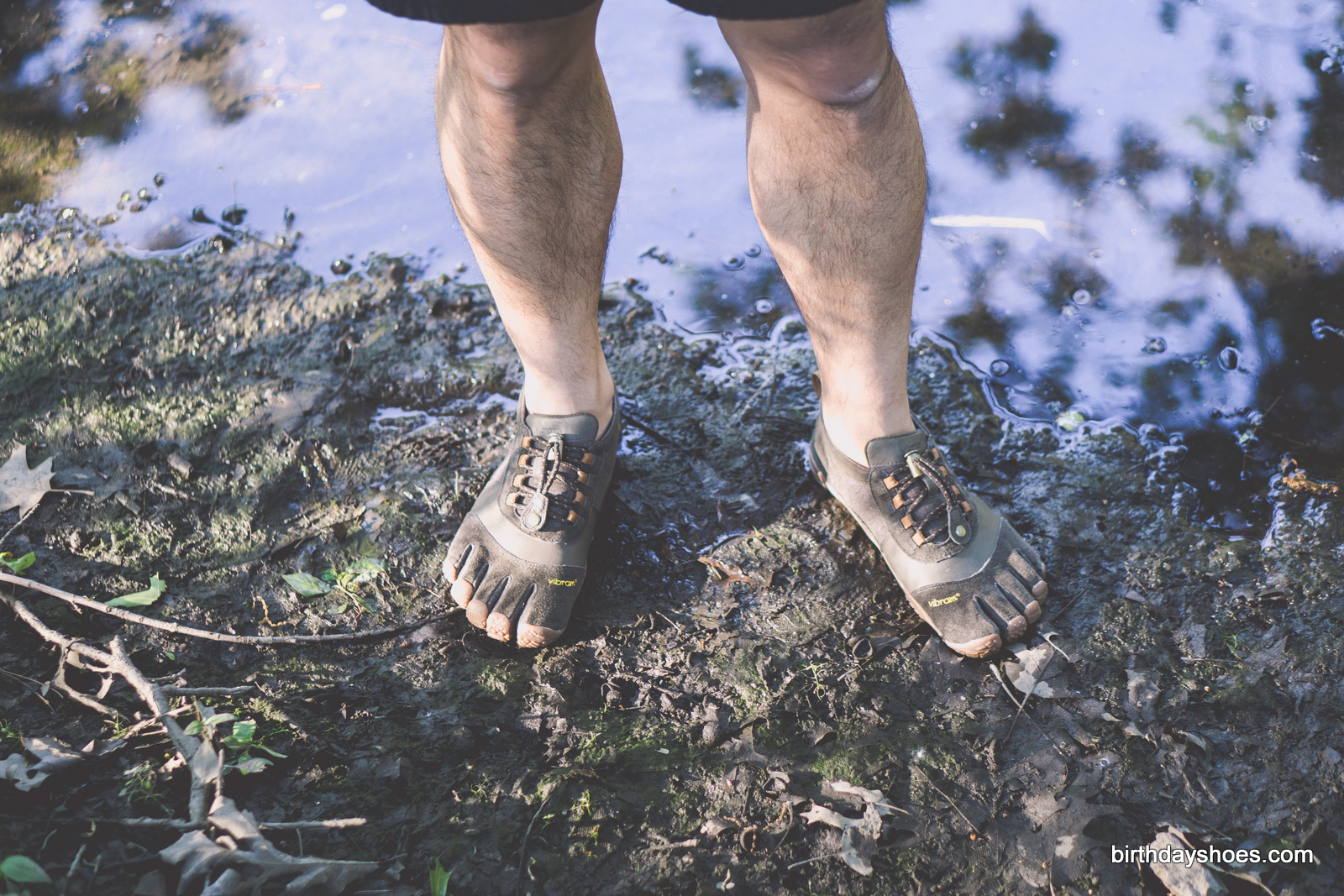
I usually run trails in either my 5mm Gladsole Trail huaraches or 5mm Shamma Sandal Warriors with a Newflex Vibram sole, so the 8mm combination of rubber and footbed in the Trek Ascent LR does feel more muted to me. However, there were a few times in my runs with the Trek Ascent LR where I KNEW I was not being careful with looking ahead/watching where I was going and I stepped on a rock or branch that DEFINITELY would have been a painful incident, but the Trek Ascent LR sole saved my butt and allowed me to walk away without regrets in my choice of footwear.
Overall, this sole is fantastic! It is very grippy due to its rubber compound, lugs/cleats, and tread pattern and provides plenty of protection, while still giving you the benefits and flexibility you come to expect from a Vibram shoe. This is a tough-terrain shoe and it provides a good compromise between security and freedom of movement. Obviously, you won’t be running on roads with these bad boys and you will definitely appreciate the off-road qualities of the sole when the trail gets rough or waterlogged.
Fit and Materials
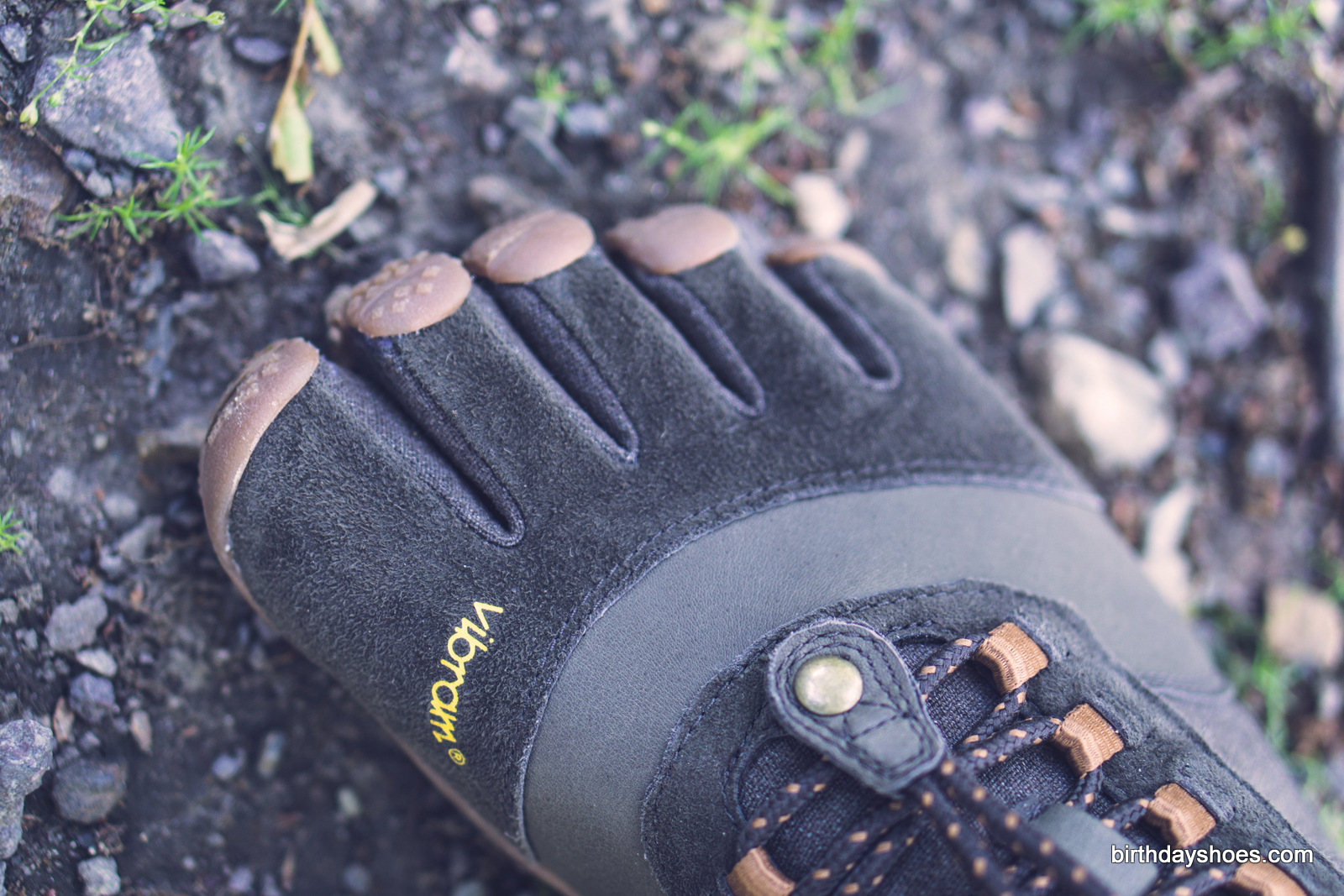
The Trek Ascent LR feels absolutely premium and sets a very high bar for materials and an overall “plush” feeling. The stitching is worlds better than the KSO TREK that the Trek Ascent replaces, the lace system is comprised of a thicker fabric than the flimsy bungee in other Vibram LS shoes, and the LS flap is locked down with a very sturdy button as opposed to velcro.
If you were a fan of the lightly-padded tongue of the Bikila LS, you can rejoice as Vibram decided to add a bit of substance in the Trek Ascent LR, rather than slim down the collar, as was the case with the Bikila EVO.
The Trek Ascent LR is differentiated from the standard Trek Ascent with a combination hemp and kangaroo leather upper. The Kangaroo packing leather is very soft, supple, and very comfortable.
The leather and hemp are used in cut-out sections, which improve the shoe’s flexibility and comfort. The old KSO TREK was, more of less, made of a single slab of leather with fabric stitched into sections that would not move with your foot. This gave the KSO TREK somewhat of a Goode Homosoline map look (the maps that were cut and unraveled in sections that resembled an orange peel to give an undistorted view of the world). Basically, it looked like Vibram was trying to take a two-dimensional leather slab and making all kinds of cuts and slices to force it around a three-dimensional foot with the old KSO TREK.
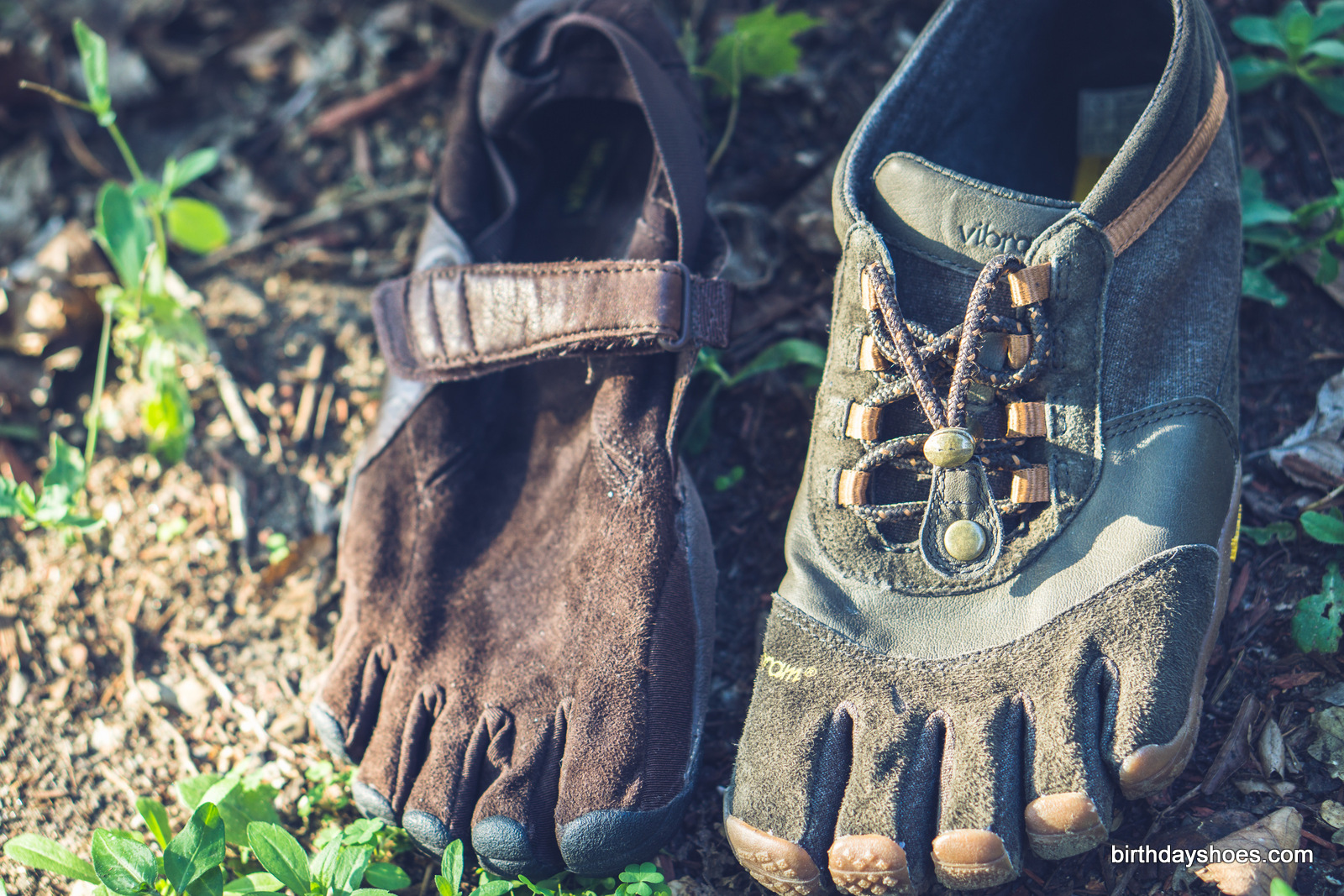
The combination of hemp and leather in the Trek Ascent LR helps the shoe dry faster than an 100% fabric upper. These are NOT waterproof by any means, but they might be slightly splash resistant if you happen to get water on them at just the right angle and spot.
While the leather and hemp combination is not waterproof, it does air-dry very quickly. Included in the box was a little info about the packing leather and how it dries 10-20 times faster than normal fabrics. In my testing, I found that I was able to splash around in a riverbed then continue my hike with my uppers feeling pretty dry after a few miles on the trail. However, while the uppers are made to dry quickly, the footbed definitely is not. By the time the uppers were nearly bone dry, the bottoms of my feet were still wet and things were getting a bit spongy.
Vibram also reinforced the sides of the Trek Ascent LR with a thick leather band that covers the entire width of the shoe just below the toes and lace system. In the standard Trek Ascent, this reinforcement is a simple patch on either side of the shoe, but the LR version has a premium-feeling thick leather strip that feels great and should prevent blowouts in those parts of the shoe.
The footbed in the Trek Ascent LR can be characterized as…squishy. This 4mm footbed is not removable and while other Vibram soles may have similarly thick EVA, the Trek Ascent’s EVA is more plush and forgiving than other shoes in the lineup. This soft footbed is well-advertised by the aforementioned “soft” button on the bottom of the sole. The overall ground feel is more diminished as a result of this soft footbed and thick sole; a few degrees less than the groundfeel in the thicker-stacked Bikila EVO (8.5mm vs 8mm).
Unlike the Spyridon, the Trek Ascent lacks a “3D Cocoon” polyester mesh that acts as an impact-dispersing plate. The protection in the Ascent comes from the thicker sole and footbed. Overall, I would say that you get slightly better protection and slightly worse groundfeel with the Trek Ascent compared to the Spyridon, but the MEGAGRIP sole in the Trek Ascent is much grippier than the TC-1 rubber compound of the Spyridon sole.
Together, the 4mm MEGAGRIP rubber and soft 4mm footbed provide a good amount of protection with tough terrain and helps keep things a bit less jarring upon landing than other Vibram shoes in the past. The groundfeel should be plenty for most users, while giving enough protection. You will still feel rocks and, yes, they can still sting, but there is enough plush and protection to keep your foot safe, yet enough transmission of textures and impact to keep your eyes looking forward for obstacles and good trail-running technique. These are not hiking boots and that’s a good thing! While the shoes are comparatively thick to the KSO TREK and even the Spyridon, you cannot Viking your way around mountain trails in them.
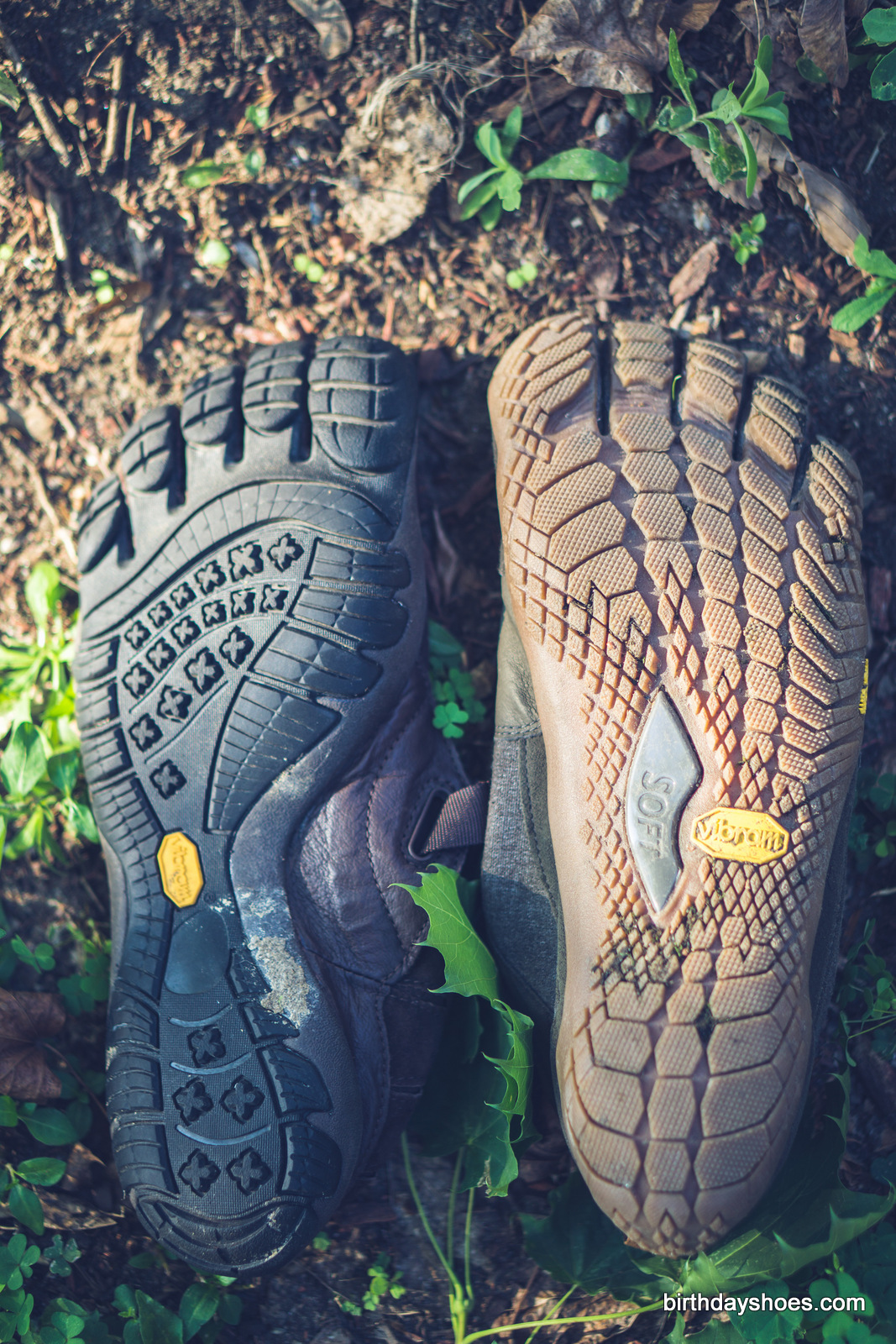
Between the Spyridon, KSO TREK, and Trek Ascent LR, I like the Ascent LR best for its traction, grip, and protection. While the stack height and weight may be greater in the Ascent LR, the sole is still relatively flexible and provides a lot of protection for pesky rocks, twigs, and other obstacles. The lugs in the Spyridon are much shallower, less textured, and fewer in number and its rubber compound is less sticky, so I do not really see a reason to pick the older Spyridon design over the Trek Ascent. I would expect the Trek Ascent to replace the Spyridon in the lineup and the older mud racer will probably be phased out completely, especially since many of Vibram’s models have become thicker in recent years (thank goodness the KSO EVO and EL-X are still retained as the featherweights of the lineup).
Note on Sizing
Sizing with the Trek Ascent LR is slightly wider and roomier than the Bikila EVO all around, but the toes feel shorter because of the thicker sole. Unlike the Bikila EVO, which had a bit of a molded interior, the Trek Ascent LR is mostly flat and does not dictate your foot movement as much as the Bikila EVO. Interior-wise, your foot is hugged in a fashion similar to the KSO TREK or older Bikila LS.
Heel and ankle sections felt roomy and can be adjusted with the lace system, but as a caution for some users, the ankle collar is slightly higher than in the KSO TREK, Spyridon, or Bikila, which may cause some irritation if you have a particularly bony talus (the bone that sticks out to the sides near the hinge of the foot).
Summary
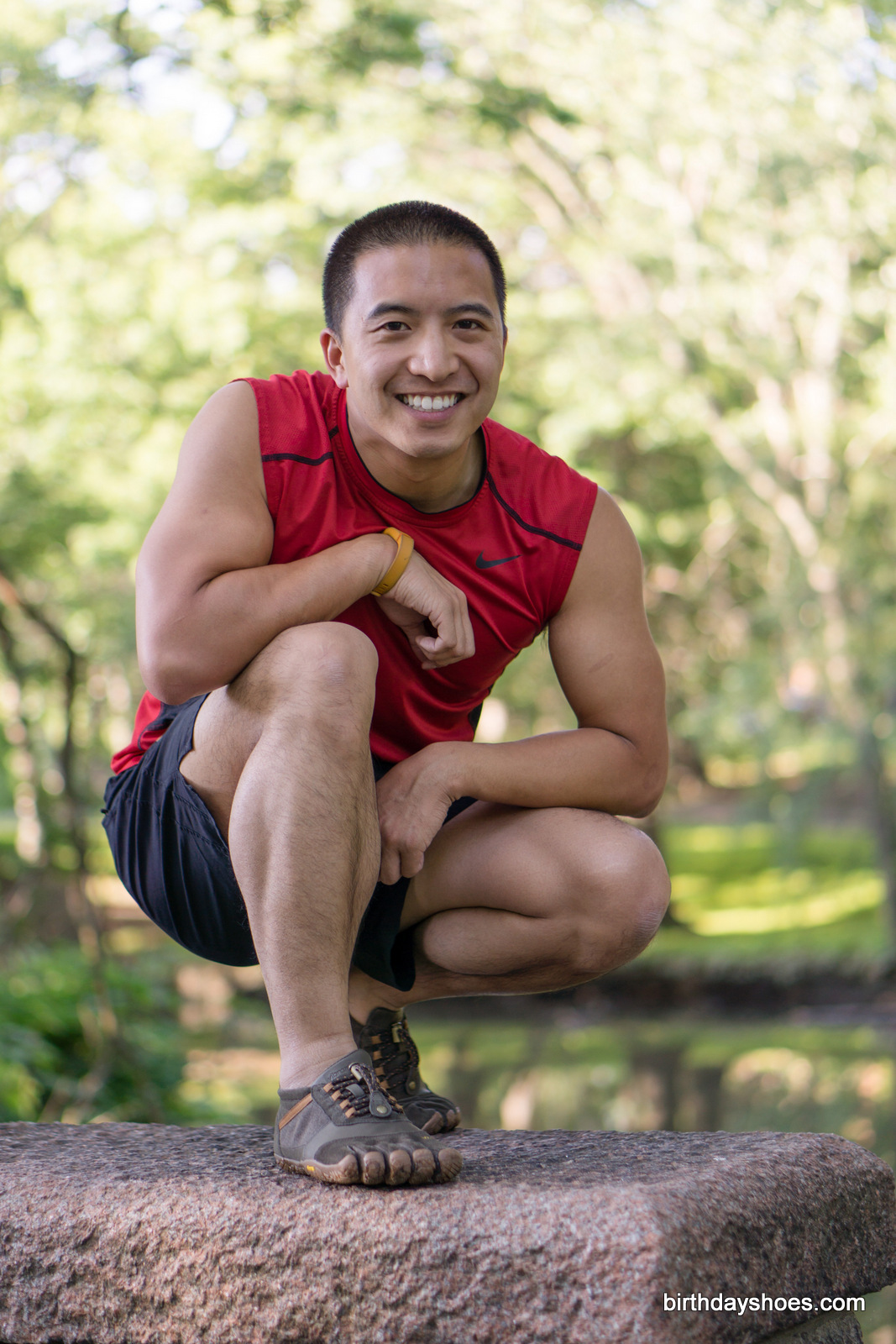
The FiveFingers Trek Ascent LR is an excellent off-road shoe. It is protective, yet relatively flexible, stylish, and very grippy in dirt, mud, rocks, and moss. The leather and hemp construction can almost be described as beautiful and it can tackle all sorts of nasty stuff.
The Trek Ascent LR really replaces both the older, original KSO Trek and FiveFingers Spyridon as the "tough mudder" shoe for Vibram lovers. The Trek Ascent LR is Vibrams best off-road shoe to date and one of their best designs as well.
The three Vibram shoes that cover just about everything you need in my opinion are the KSO EVO for fitness, general use, and running, the Bikila EVO for runners looking for more protection, and the Trek Ascent LR for dirt lovers and rock lobsters.
If you're eager to try out the Trek Ascent LR, hop over to TravelCountry.com and you'll find they are $120, which is 20% off their MSRP of $150.
A huge thanks to Travel Country for sending me a pair of the Trek Ascent LR to test out!


